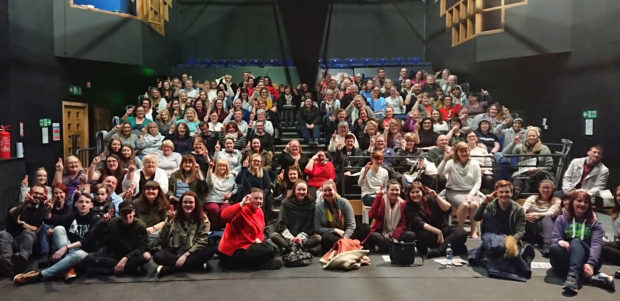
A sign language class in Paisley proved so popular that it attracted more than double the amount of participants organisers expected.
Staff who arranged British Sign Language sessions at the town’s Arts Centre reckoned they would get 50 people coming along, but they were astounded when there was a queue of 128 waiting to join the new club.
Organiser Emma Armstrong, who works for Renfrewshire Leisure said: “It was the first meeting of the club and we got a real shock when we saw people queuing out the door and along the side of the building.
“We had to move everyone into the main theatre auditorium, as there were so many who came along. We were delighted to see all these people were interested in learning sign language.”
The Arts Centre received funding from Renfrewshire Council to help with the costs of running the Sign Language Club and the grant means the club can run for at least a year.
Those attending now only have to pay £10 for each block of six sessions.
The club meets on a Monday night at the Arts Centre and instruction is provided by Graham Dow, who is profoundly deaf, and David O’Rorke from local theatre company Historical Adventures.
David added: “We had people coming along to learn BSL for all sorts of reasons.
“One lady wanted to learn because her grandson was born deaf and would be learning Makaton – the children’s version of BSL. She wanted to be able to communicate with the boy.
“Some people wanted to use the signing skill in their workplace and others were just interested in learning BSL.
“Everything was very informal and everyone had a lot of fun. But people were also very keen to learn sign language.”
British Sign Language is the variant used in the United Kingdom, and is the first or preferred language of many deaf people.
There are 125,000 deaf adults in the UK who use BSL, plus an estimated 20,000 children.

Enjoy the convenience of having The Sunday Post delivered as a digital ePaper straight to your smartphone, tablet or computer.
Subscribe for only £5.49 a month and enjoy all the benefits of the printed paper as a digital replica.
Subscribe